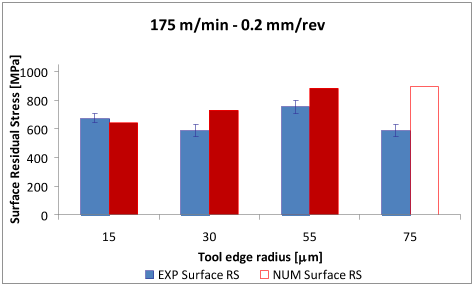




Did you find this useful? Give us your feedback














88 citations
79 citations
...[ 80 ] concluded that the tensile residual stresses were found on the machined surface, while compressive residual stresses were observed below the surface....
[...]
45 citations
30 citations
26 citations
822 citations
315 citations
...The material behaviour of the AISI 1045 steel was described using the Oxley model [12]....
[...]
271 citations
...Most research on cutting operations has emphasized that cutting parameters [1-7], tool material and geometry [3, 5, 8, 9] and the nature of the worked material [3, 8, 10] heavily influence the development of tensile or compressive residual stresses....
[...]
211 citations
...Most research on cutting operations has emphasized that cutting parameters [1-7], tool material and geometry [3, 5, 8, 9] and the nature of the worked material [3, 8, 10] heavily influence the development of tensile or compressive residual stresses....
[...]
193 citations
...Most research on cutting operations has emphasized that cutting parameters [1-7], tool material and geometry [3, 5, 8, 9] and the nature of the worked material [3, 8, 10] heavily influence the development of tensile or compressive residual stresses....
[...]
When steady-state conditions were reached as concerns cutting forces, chip thickness, shear angle and chip-tool contact length, a coupled thermo-mechanical Eulerian analysis was started based on the outputs of the previous one ( geometry, velocities, forces and so on).
The most relevant criticisms involve material characterization for strain, strain rate, material hardness and temperature conditions typical of machining, friction data at the tool/part interface, chip formation and heat transfer conditions.
One of the main problem in temperature modelling, by using the updated-Lagrangian formulation, is that only few milliseconds of cutting time can be simulated, even in the case of 2-D simulations of orthogonal cutting conditions.
The main causes of residual stresses in machining are: (a) inhomogeneous plastic deformation caused by the mechanical, thermal (frictional) and metallurgical effects, and (b) microstructural transformation associated with the temperature and chip formation process.
heat transfer at the tool-chip interface is taken into account by means of a global heat transfer coefficient at the tool-chip interface, which is function of the cutting parameters of the process.
X-ray diffraction method was used to measure residual stress, and this was accomplished by measuring the changes in the distance between crystallographic planes from the unstressed to the deformed condition, i.e., using d-spacing, as a strain gage.
Most research on cutting operations has emphasized that cutting parameters [1-7], tool material and geometry [3, 5, 8, 9] and the nature of the worked material [3, 8, 10] heavily influence the development of tensile or compressive residual stresses.
it was demonstrated that the reliability of any FE numerical model for predicting the residual stresses is strictly related to the proper prediction of both mechanical and thermal aspects.
Among the parameters to be set in the numerical simulation, the global heat transfer coefficient at the tool-chip interface (h) plays a relevant role because it directly impacts on the temperature evolution.
The residual stresses on the machining surface are an important factor in determining the performance and fatigue strength of components.
At this stage, the global heat transfer coefficient at the tool-chip interface, h, was assumed as a function of both the normal pressure and the temperature along the contact length [13,14].
Many research efforts have been made in this direction, including experimental findings, analytical modelling, finite element modelling, and various combinations of those aspects.
since an automatic method for collecting the residual stresses is not yet implemented in SFTCDEFORM-2D® V.10, the following procedure was employed: (i) For several time steps, the tool was released from the machined surface (unloading phase) and the workpiece was cooled down to the room temperature; (ii) surface and in-depth residual stresses at several locations ofthe machined surface were collected and the average values were calculated.
At first a plane-strain updated-Lagrangian analysis was carried out: no temperature effect was taken into account and the global heat transfer coefficient, h, was fixed equal to 0 kW/m2K.